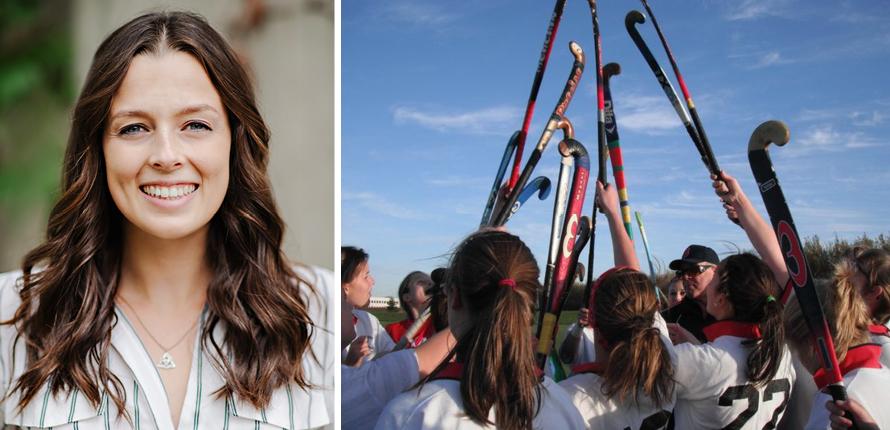We use cookies on this site to enhance your experience.
By selecting “Accept” and continuing to use this website, you consent to the use of cookies.
Search for academic programs, residence, tours and events and more.
Oct. 21, 2024
Print | PDFBy Taylor Coleman, PhD candidate, Kinesiology and Physical Education
I have always loved sports. As an athlete, I usually played the role of “team player” or “mediator,” and I became intrigued by how sports teams actually function. What can players do to make them more efficient?
My passion for sports led me to pursue a master’s degree in Kinesiology at Wilfrid Laurier University, with a focus on sport psychology. Now I am conducting research on group dynamics in youth sports. Group dynamics is a broad concept that considers topics such as roles, cohesion and teamwork. My research involved collecting survey data from athletes at rinks, courts and fields across Ontario. I spoke to young athletes to understand their commitment to their roles and their team's cohesion.
Conversations with coaches, parents and league organizers revealed the significant influence that parents have on a team's cohesion. These interactions, along with having highly involved parents of my own, inspired me to further explore how parents affect the group dynamics of youth sports.

Coleman (left) gathered with her field hockey team (right)
My supervisor, Professor Mark Eys, and I recently published my first dissertation study, The role of parents toward the group dynamics of youth sport teams. We conducted 31 interviews with coaches, parents and parent-coaches across Canada.
Participants identified seven elements of group dynamics – including role perceptions, clique formation, cohesion and teamwork – that are influenced by parents, each with potential implications for athlete satisfaction and team performance. I learned that parents influence group dynamics through various public behaviours, such as trying to coach from the stands and paying for team-building outings, as well as private conversations with their children, other parents and coaches.
Participants also identified eleven different strategies to keep parents positively engaged in team dynamics, including encouraging conflict resolution and teamwork, and to deter negative parental interference, such as avoiding negative talk about teammates and providing instructions to athletes that contradict the coach.
Two surprising findings emerged from this study. First, though some of the strategies for fostering positive parent influence centered on creating boundaries between coaches and parents, the majority of them encouraged proactive and open communication between parents and athletes throughout the season. For example, assigning roles to parents so they have a clear understanding of how they can help the team or creating a season-long training and strategy plan for the team and sharing that with parents. This was interesting given that many interventions in sport parent research focus on educating parents about appropriate and inappropriate behaviours.
Second, it was surprising how much organizations, parents and athletes appear to rely on coaches to protect the group dynamics of their teams from outsiders, including parents. These findings indicate that a lot of a team’s dynamics rest on the shoulders of coaches. It is worth noting, however, that coaches are very rarely provided the necessary training in communication and sport psychology to be successful.
Our key messages from this study are that parents significantly influence the structure and functioning of sports teams, use multiple pathways to affect group dynamics and that coaches play a crucial role in facilitating positive parent involvement. However, traditional education and policy approaches may not be sufficient to change parent behaviour. Group dynamics-based interventions that help athletes, coaches and parents learn how their individual actions have implications for the entire team could be an alternative option to give coaches the skills to effectively mitigate negative parental interference.